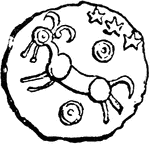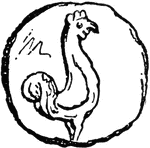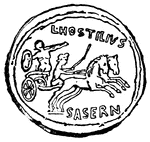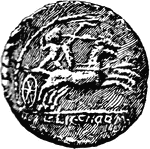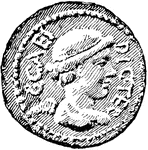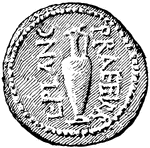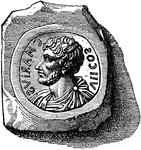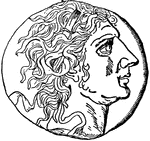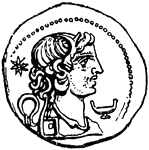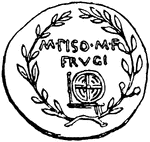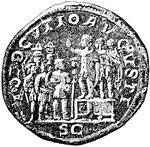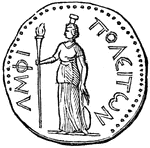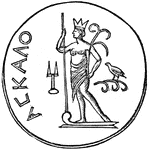This ClipArt gallery offers 97 images of ancient Roman coins. These coins range throughout the duration of the Roman Empire.

Medal of Adramyttium
A medal of Adramyttium which depicts icons of Castor and Pollux, two dieties of mariners, who were revered…

Medal of Aradus
A medal of Aradus depicting a fly on one side, which appears to commemorate Jupiter. The other side…
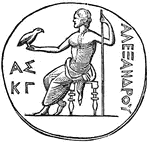
Medal of Ascalon
An image of Jupiter with the inscription Alexandrou, suggesting that Alexander the Great was worshipped…

Medal of Claudius
A medal with the portrait of Claudius on one side and a depiction of a ceremony involving oxen on the…
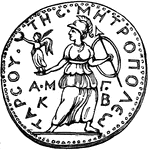
Medal of Tarsus
A medal of Tarsus which suggest that Minerva, the goddess of arts and sciences, was revered there. In…
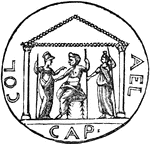
Minerva
A medal representing Jupiter sitting in a temple, conversing with Minerva and attended by Juno.
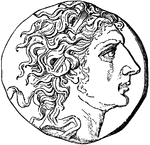
Mithradates VI Coin
An illustration of Mithradates VI on the face of a coin. Mithradates VI was king of Pontus in northern…

Victory Coin over Pyrrhus
Roman coin struck to commemorate the victory over Pyrrhus and his elephants.

Roman Coin
"The so-called Republican, the earliest coinage, began at an early period of Roman history, and subsisted…

Roman Coins (Denarius)
An illustration of a roman coin (denarius). The left side represents the laurel-crowned head of Titus.…

Sestertius
The sestertius or sesterce was an ancient silver coin during the Roman Republic and the Roman Empire.
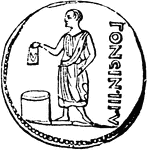
Tabella
"Tabella, a billet or tablet, with which each citizen and judex voted in the comitia and courts of justice.…

Coin of Vespasian
Titus Flavius Vespasianus, commonly known as Vespasian (November 17, 9 – June 23, 79), was a Roman…
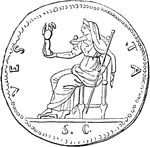
Coin of Vesta
"Represents Vesta seated on a throne, with the Palladium of Rome in her hand." — Anthon, 1891

Victory
A representation of Victory, inscribing on a shield the triumph of the Romans; at the same time, she…


